Yiqiao Jin
The Influence of Text Variation on User Engagement in Cross-Platform Content Sharing
Apr 26, 2025Abstract:In today's cross-platform social media landscape, understanding factors that drive engagement for multimodal content, especially text paired with visuals, remains complex. This study investigates how rewriting Reddit post titles adapted from YouTube video titles affects user engagement. First, we build and analyze a large dataset of Reddit posts sharing YouTube videos, revealing that 21% of post titles are minimally modified. Statistical analysis demonstrates that title rewrites measurably improve engagement. Second, we design a controlled, multi-phase experiment to rigorously isolate the effects of textual variations by neutralizing confounding factors like video popularity, timing, and community norms. Comprehensive statistical tests reveal that effective title rewrites tend to feature emotional resonance, lexical richness, and alignment with community-specific norms. Lastly, pairwise ranking prediction experiments using a fine-tuned BERT classifier achieves 74% accuracy, significantly outperforming near-random baselines, including GPT-4o. These results validate that our controlled dataset effectively minimizes confounding effects, allowing advanced models to both learn and demonstrate the impact of textual features on engagement. By bridging quantitative rigor with qualitative insights, this study uncovers engagement dynamics and offers a robust framework for future cross-platform, multimodal content strategies.
Large Language Model Agent: A Survey on Methodology, Applications and Challenges
Mar 27, 2025Abstract:The era of intelligent agents is upon us, driven by revolutionary advancements in large language models. Large Language Model (LLM) agents, with goal-driven behaviors and dynamic adaptation capabilities, potentially represent a critical pathway toward artificial general intelligence. This survey systematically deconstructs LLM agent systems through a methodology-centered taxonomy, linking architectural foundations, collaboration mechanisms, and evolutionary pathways. We unify fragmented research threads by revealing fundamental connections between agent design principles and their emergent behaviors in complex environments. Our work provides a unified architectural perspective, examining how agents are constructed, how they collaborate, and how they evolve over time, while also addressing evaluation methodologies, tool applications, practical challenges, and diverse application domains. By surveying the latest developments in this rapidly evolving field, we offer researchers a structured taxonomy for understanding LLM agents and identify promising directions for future research. The collection is available at https://github.com/luo-junyu/Awesome-Agent-Papers.
ScreenLLM: Stateful Screen Schema for Efficient Action Understanding and Prediction
Mar 26, 2025Abstract:Graphical User Interface (GUI) agents are autonomous systems that interpret and generate actions, enabling intelligent user assistance and automation. Effective training of these agent presents unique challenges, such as sparsity in supervision signals, scalability for large datasets, and the need for nuanced user understanding. We propose stateful screen schema, an efficient representation of GUI interactions that captures key user actions and intentions over time. Building on this foundation, we introduce ScreenLLM, a set of multimodal large language models (MLLMs) tailored for advanced UI understanding and action prediction. Extensive experiments on both open-source and proprietary models show that ScreenLLM accurately models user behavior and predicts actions. Our work lays the foundation for scalable, robust, and intelligent GUI agents that enhance user interaction in diverse software environments.
Protein Large Language Models: A Comprehensive Survey
Feb 21, 2025Abstract:Protein-specific large language models (Protein LLMs) are revolutionizing protein science by enabling more efficient protein structure prediction, function annotation, and design. While existing surveys focus on specific aspects or applications, this work provides the first comprehensive overview of Protein LLMs, covering their architectures, training datasets, evaluation metrics, and diverse applications. Through a systematic analysis of over 100 articles, we propose a structured taxonomy of state-of-the-art Protein LLMs, analyze how they leverage large-scale protein sequence data for improved accuracy, and explore their potential in advancing protein engineering and biomedical research. Additionally, we discuss key challenges and future directions, positioning Protein LLMs as essential tools for scientific discovery in protein science. Resources are maintained at https://github.com/Yijia-Xiao/Protein-LLM-Survey.
CultureVLM: Characterizing and Improving Cultural Understanding of Vision-Language Models for over 100 Countries
Jan 02, 2025Abstract:Vision-language models (VLMs) have advanced human-AI interaction but struggle with cultural understanding, often misinterpreting symbols, gestures, and artifacts due to biases in predominantly Western-centric training data. In this paper, we construct CultureVerse, a large-scale multimodal benchmark covering 19, 682 cultural concepts, 188 countries/regions, 15 cultural concepts, and 3 question types, with the aim of characterizing and improving VLMs' multicultural understanding capabilities. Then, we propose CultureVLM, a series of VLMs fine-tuned on our dataset to achieve significant performance improvement in cultural understanding. Our evaluation of 16 models reveals significant disparities, with a stronger performance in Western concepts and weaker results in African and Asian contexts. Fine-tuning on our CultureVerse enhances cultural perception, demonstrating cross-cultural, cross-continent, and cross-dataset generalization without sacrificing performance on models' general VLM benchmarks. We further present insights on cultural generalization and forgetting. We hope that this work could lay the foundation for more equitable and culturally aware multimodal AI systems.
UniGuard: Towards Universal Safety Guardrails for Jailbreak Attacks on Multimodal Large Language Models
Nov 03, 2024



Abstract:Multimodal large language models (MLLMs) have revolutionized vision-language understanding but are vulnerable to multimodal jailbreak attacks, where adversaries meticulously craft inputs to elicit harmful or inappropriate responses. We propose UniGuard, a novel multimodal safety guardrail that jointly considers the unimodal and cross-modal harmful signals. UniGuard is trained such that the likelihood of generating harmful responses in a toxic corpus is minimized, and can be seamlessly applied to any input prompt during inference with minimal computational costs. Extensive experiments demonstrate the generalizability of UniGuard across multiple modalities and attack strategies. It demonstrates impressive generalizability across multiple state-of-the-art MLLMs, including LLaVA, Gemini Pro, GPT-4, MiniGPT-4, and InstructBLIP, thereby broadening the scope of our solution.
Scito2M: A 2 Million, 30-Year Cross-disciplinary Dataset for Temporal Scientometric Analysis
Oct 12, 2024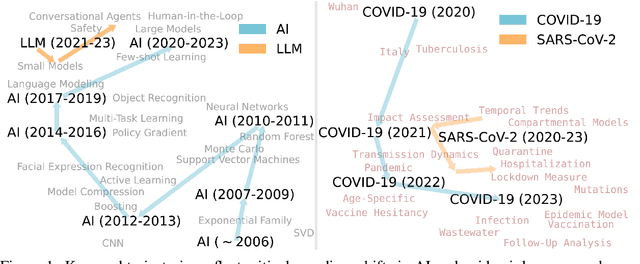
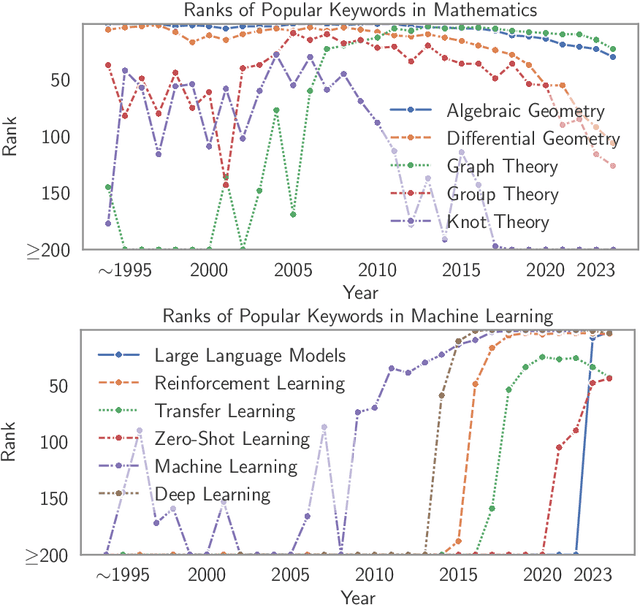

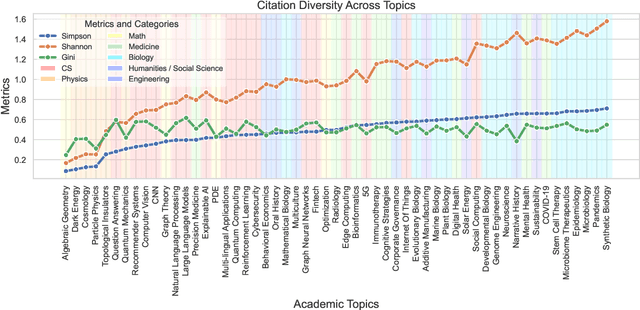
Abstract:Understanding the creation, evolution, and dissemination of scientific knowledge is crucial for bridging diverse subject areas and addressing complex global challenges such as pandemics, climate change, and ethical AI. Scientometrics, the quantitative and qualitative study of scientific literature, provides valuable insights into these processes. We introduce Scito2M, a longitudinal scientometric dataset with over two million academic publications, providing comprehensive contents information and citation graphs to support cross-disciplinary analyses. Using Scito2M, we conduct a temporal study spanning over 30 years to explore key questions in scientometrics: the evolution of academic terminology, citation patterns, and interdisciplinary knowledge exchange. Our findings reveal critical insights, such as disparities in epistemic cultures, knowledge production modes, and citation practices. For example, rapidly developing, application-driven fields like LLMs exhibit significantly shorter citation age (2.48 years) compared to traditional theoretical disciplines like oral history (9.71 years).
MedHalu: Hallucinations in Responses to Healthcare Queries by Large Language Models
Sep 29, 2024Abstract:The remarkable capabilities of large language models (LLMs) in language understanding and generation have not rendered them immune to hallucinations. LLMs can still generate plausible-sounding but factually incorrect or fabricated information. As LLM-empowered chatbots become popular, laypeople may frequently ask health-related queries and risk falling victim to these LLM hallucinations, resulting in various societal and healthcare implications. In this work, we conduct a pioneering study of hallucinations in LLM-generated responses to real-world healthcare queries from patients. We propose MedHalu, a carefully crafted first-of-its-kind medical hallucination dataset with a diverse range of health-related topics and the corresponding hallucinated responses from LLMs with labeled hallucination types and hallucinated text spans. We also introduce MedHaluDetect framework to evaluate capabilities of various LLMs in detecting hallucinations. We also employ three groups of evaluators -- medical experts, LLMs, and laypeople -- to study who are more vulnerable to these medical hallucinations. We find that LLMs are much worse than the experts. They also perform no better than laypeople and even worse in few cases in detecting hallucinations. To fill this gap, we propose expert-in-the-loop approach to improve hallucination detection through LLMs by infusing expert reasoning. We observe significant performance gains for all the LLMs with an average macro-F1 improvement of 6.3 percentage points for GPT-4.
ProteinGPT: Multimodal LLM for Protein Property Prediction and Structure Understanding
Aug 21, 2024Abstract:Understanding biological processes, drug development, and biotechnological advancements requires detailed analysis of protein structures and sequences, a task in protein research that is inherently complex and time-consuming when performed manually. To streamline this process, we introduce ProteinGPT, a state-of-the-art multi-modal protein chat system, that allows users to upload protein sequences and/or structures for comprehensive protein analysis and responsive inquiries. ProteinGPT seamlessly integrates protein sequence and structure encoders with linear projection layers for precise representation adaptation, coupled with a large language model (LLM) to generate accurate and contextually relevant responses. To train ProteinGPT, we construct a large-scale dataset of 132,092 proteins with annotations, and optimize the instruction-tuning process using GPT-4o. This innovative system ensures accurate alignment between the user-uploaded data and prompts, simplifying protein analysis. Experiments show that ProteinGPT can produce promising responses to proteins and their corresponding questions.
Empowering Interdisciplinary Insights with Dynamic Graph Embedding Trajectories
Jun 25, 2024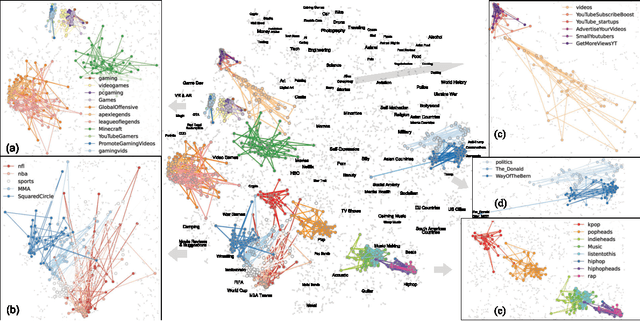
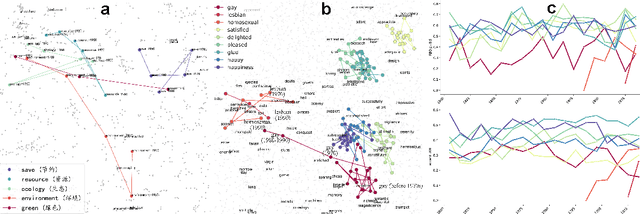

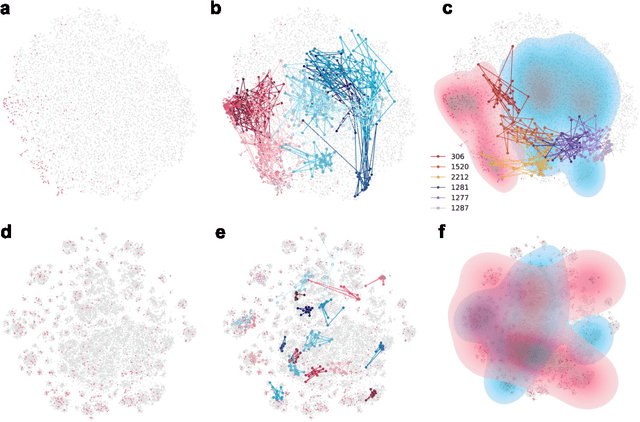
Abstract:We developed DyGETViz, a novel framework for effectively visualizing dynamic graphs (DGs) that are ubiquitous across diverse real-world systems. This framework leverages recent advancements in discrete-time dynamic graph (DTDG) models to adeptly handle the temporal dynamics inherent in dynamic graphs. DyGETViz effectively captures both micro- and macro-level structural shifts within these graphs, offering a robust method for representing complex and massive dynamic graphs. The application of DyGETViz extends to a diverse array of domains, including ethology, epidemiology, finance, genetics, linguistics, communication studies, social studies, and international relations. Through its implementation, DyGETViz has revealed or confirmed various critical insights. These include the diversity of content sharing patterns and the degree of specialization within online communities, the chronological evolution of lexicons across decades, and the distinct trajectories exhibited by aging-related and non-related genes. Importantly, DyGETViz enhances the accessibility of scientific findings to non-domain experts by simplifying the complexities of dynamic graphs. Our framework is released as an open-source Python package for use across diverse disciplines. Our work not only addresses the ongoing challenges in visualizing and analyzing DTDG models but also establishes a foundational framework for future investigations into dynamic graph representation and analysis across various disciplines.
 Add to Chrome
Add to Chrome Add to Firefox
Add to Firefox Add to Edge
Add to Edge